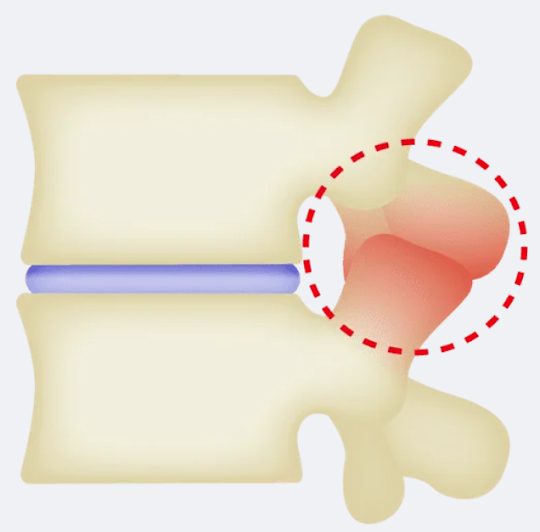
Facet joint syndrome is a disease that causes inflammation in the joints of the bones on the back side of the spine. What we call a “cricked back” or “strained back” is also an acute form of intervertebral arthritis. Although it has been neglected in orthopedic textbooks in the past, it has recently been found to be one of the most common causes of back pain.
The main symptoms of facet joint disease:
- Pain when bending backward
- Pain when twisting the lower back (like swinging in baseball or golf)
- Pain when bending over and then trying to return to the original position
- Pain near the spine
- Pain when twisting the upper body to the left or right while turning the back
- Inability to stay in a sitting position for long periods of time
- After sitting for a long time, it takes a long time to get up and move around.
- Pain just when walking
- Pain increases with exercise
- Pain in the buttocks, thighs, or knees (although this is less common)
Unlike with herniated discs, numbness in the legs rarely occurs. However, progressive facet joint disease can cause distortion of the spine, which in turn can compress the nerves, resulting in numbness in the legs. If you think you may have any of these symptoms or movements, we recommend that you have it examined without delay.
What are effective treatments for facet joint syndrome?
Generally, pain relief for an inflammation of the facet joints is often achieved by using nerve block injections or steroid injections. We believe that such treatments are effective to a certain extent, but at our clinic, we prefer to use a more advanced technology, the FOT method (intervertebral joint ozone), to remove inflammation and reduce pain. Ozone has been used mainly in Europe so far, and its effect is believed to stimulate the body, thereby causing a strong immune response, and ending the inflammation in a short period of time.
In addition, inflammation of the facet joints and the worsening of the symptoms are often caused by the deformation of the intervertebral discs.
For this reason, at our clinic, we believe that inflammation related to facet joint deformation and pain can be prevented if the degeneration of the intervertebral disc is inhibited.
As one possible method of treatment for this, a disc-repairing treatment using the Cellgel method can restore disc function by repairing the torn annulus fibrosus and replenishing the water content of the nucleus pulposus inside.
The treatment can be performed as an outpatient procedure. Local anesthesia is administered in the lower back, then a needle is inserted into the disc, and the medicine is injected in liquid form into the disc.
As we aim to achieve 100% effectiveness in treating back pain even after treatment, we also provide a thorough follow-up care. Our goal is to provide a medical care and treatment that is attentive to the pain, difficulty, and anxiety to fully accompany our patients on their way to recovery.
Written by the Administrative Director at ILC International Lumbago Clinic Tokyo



